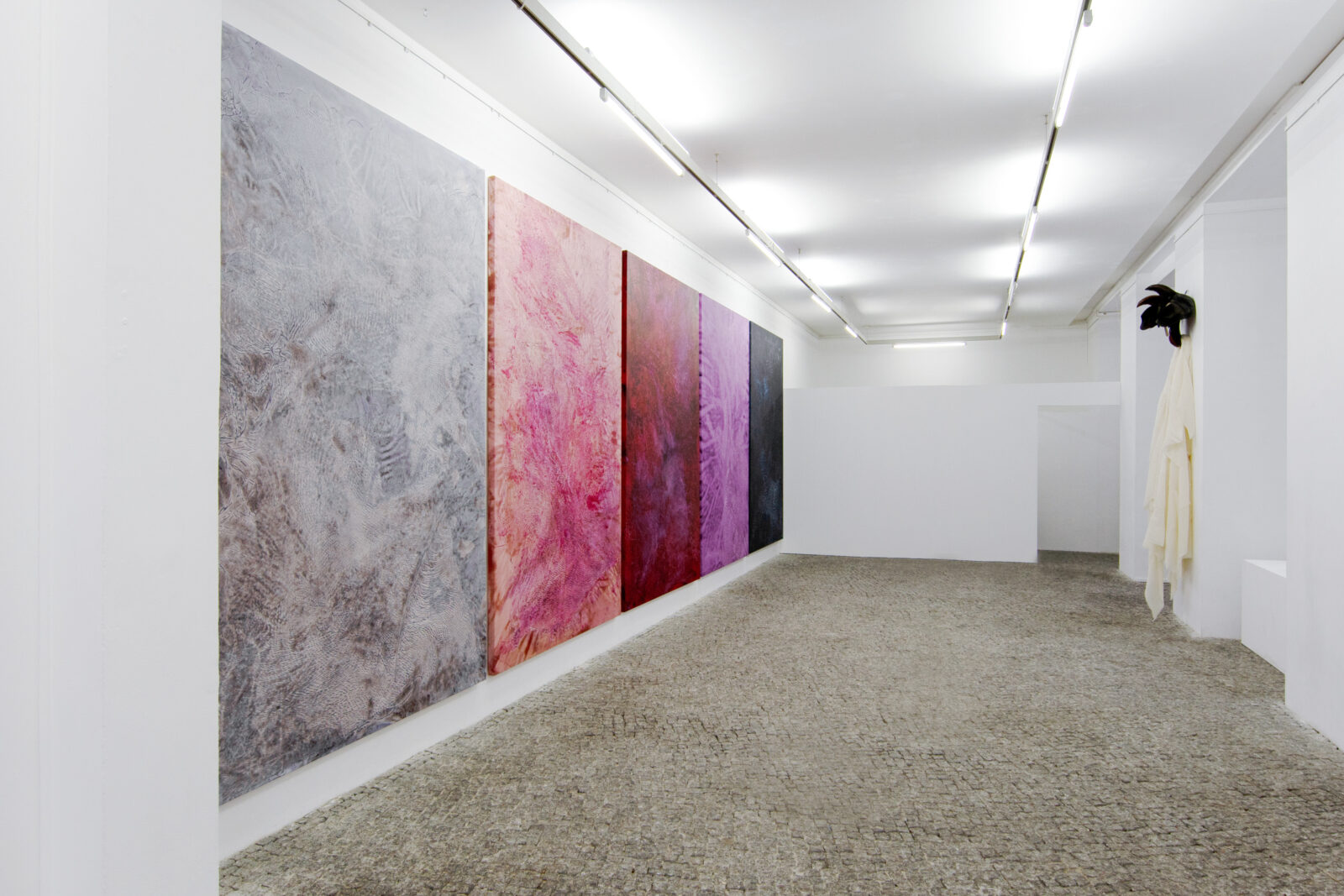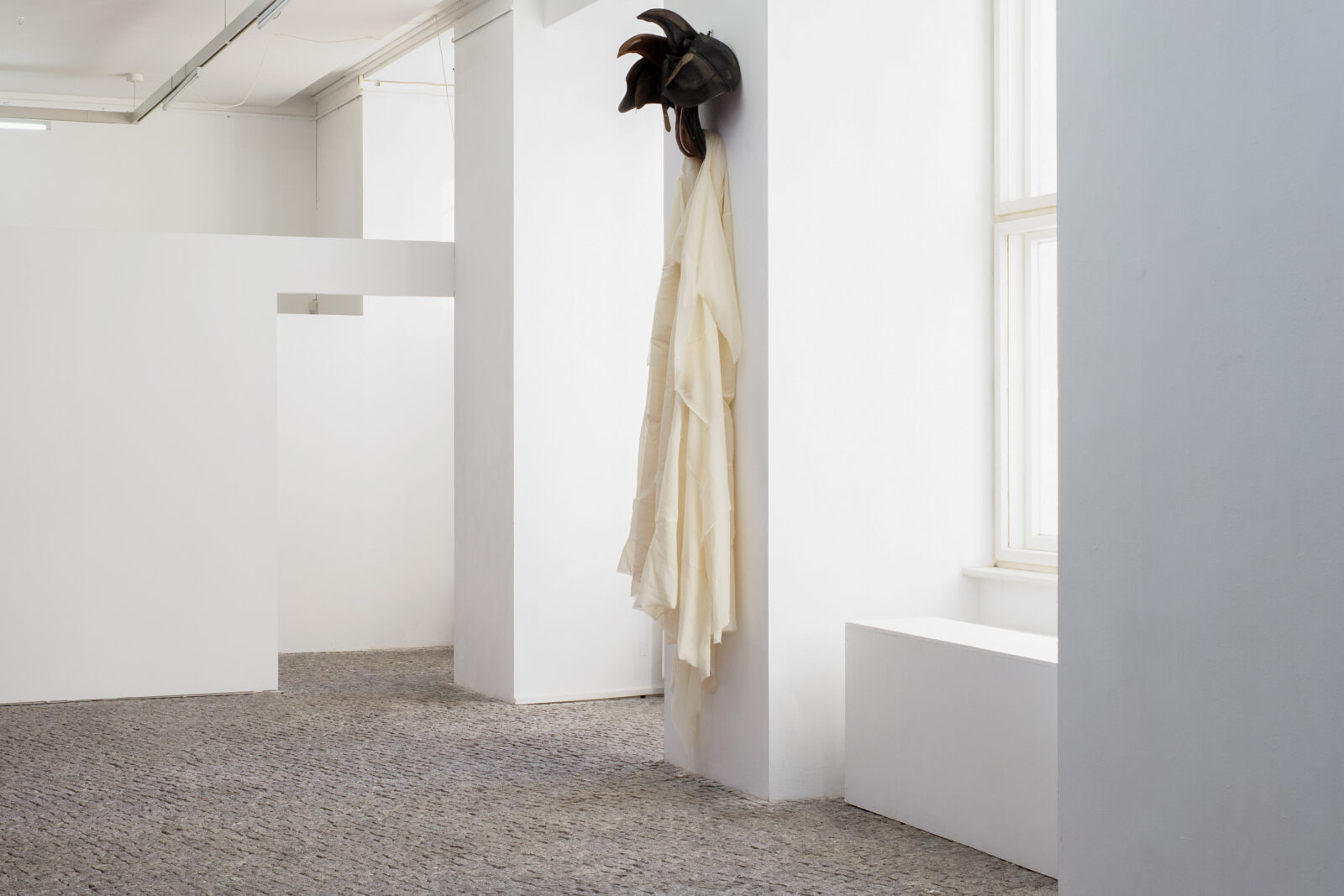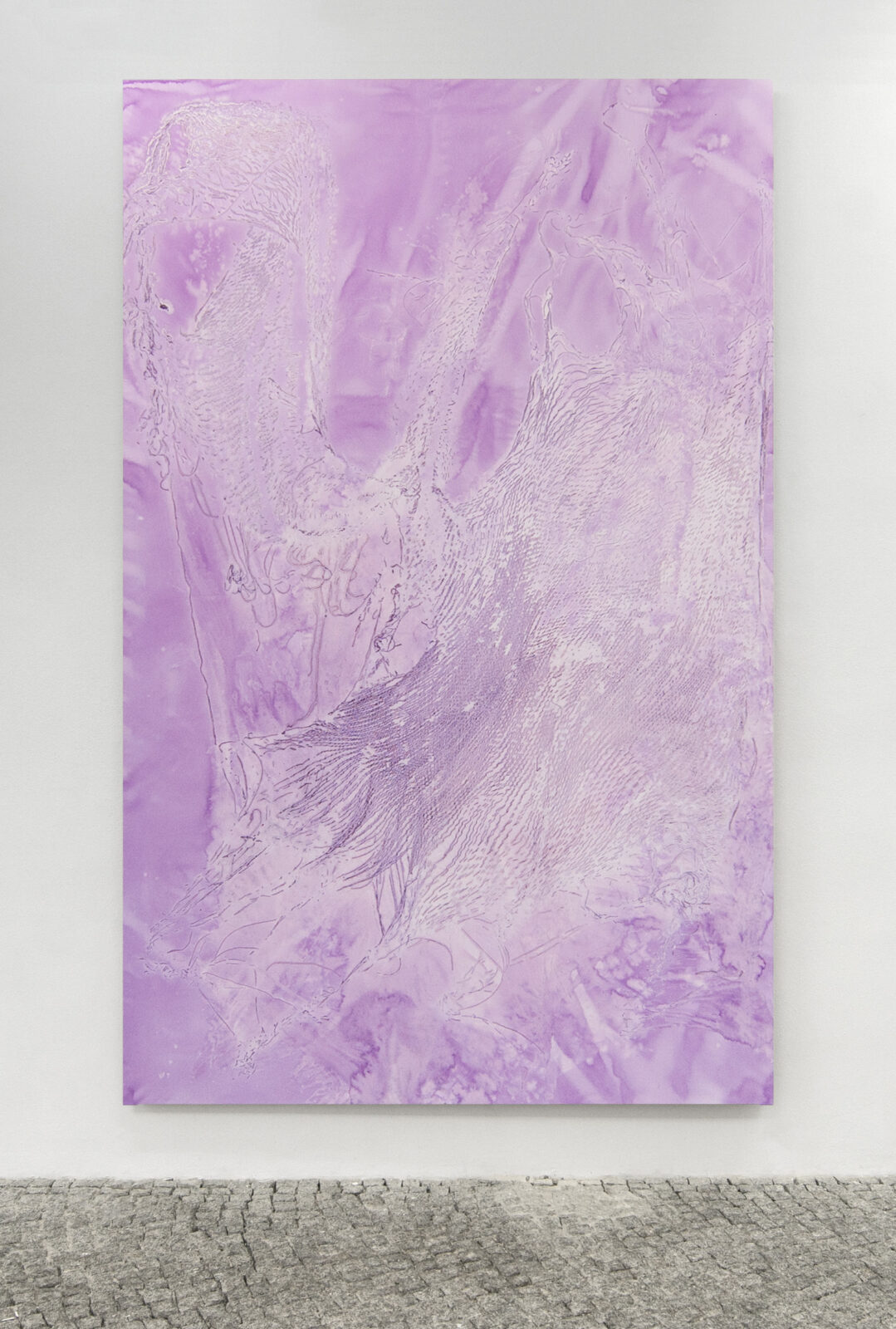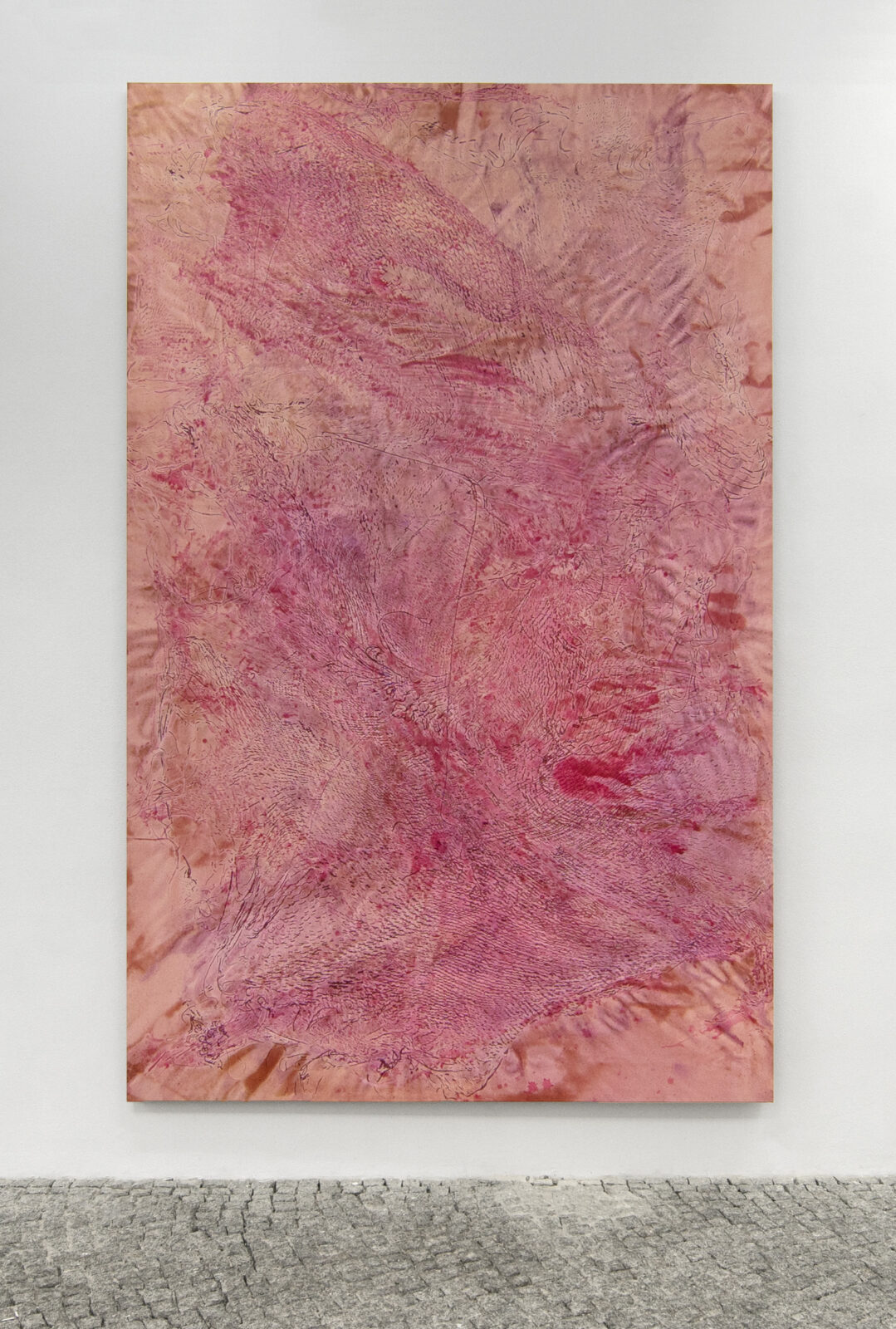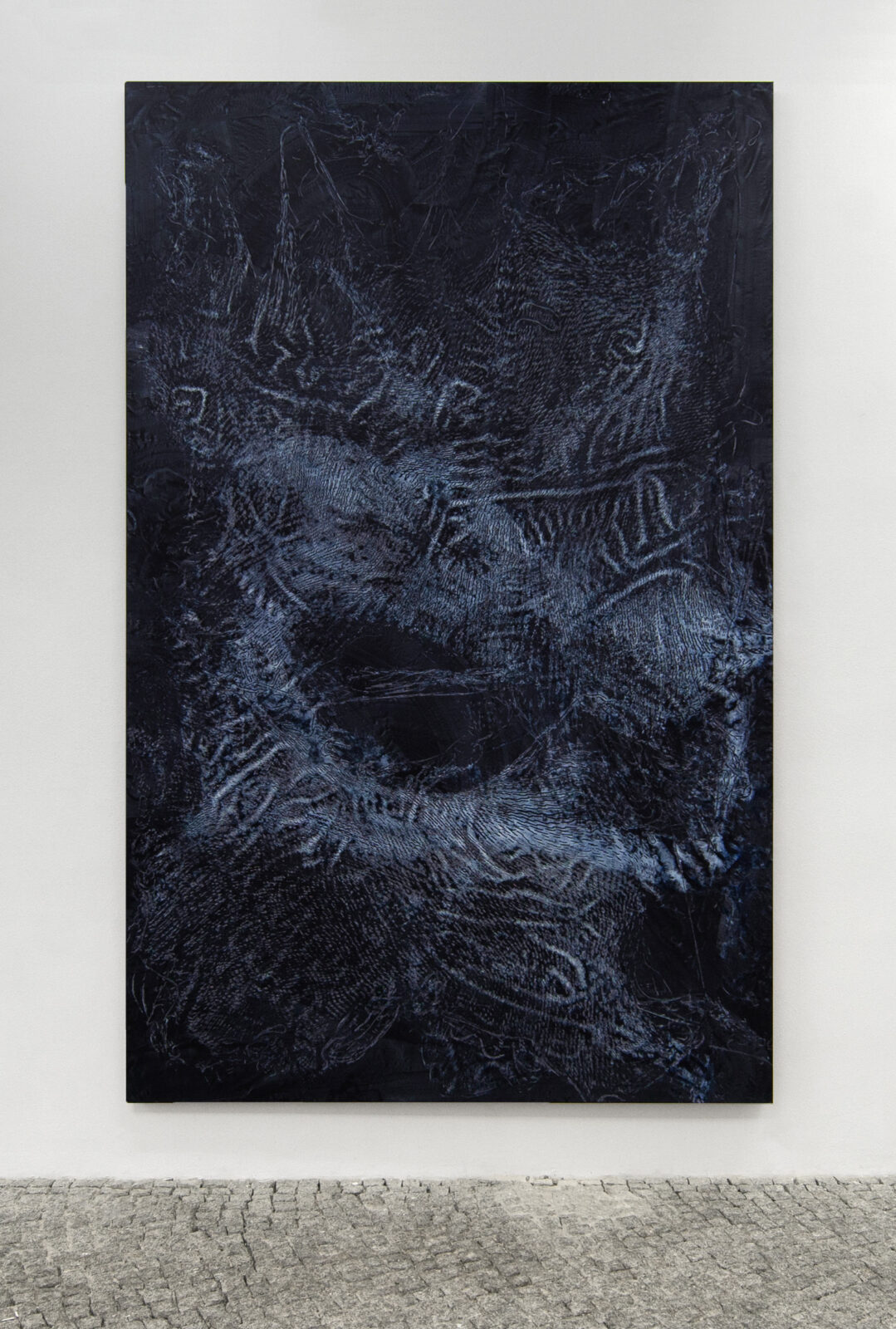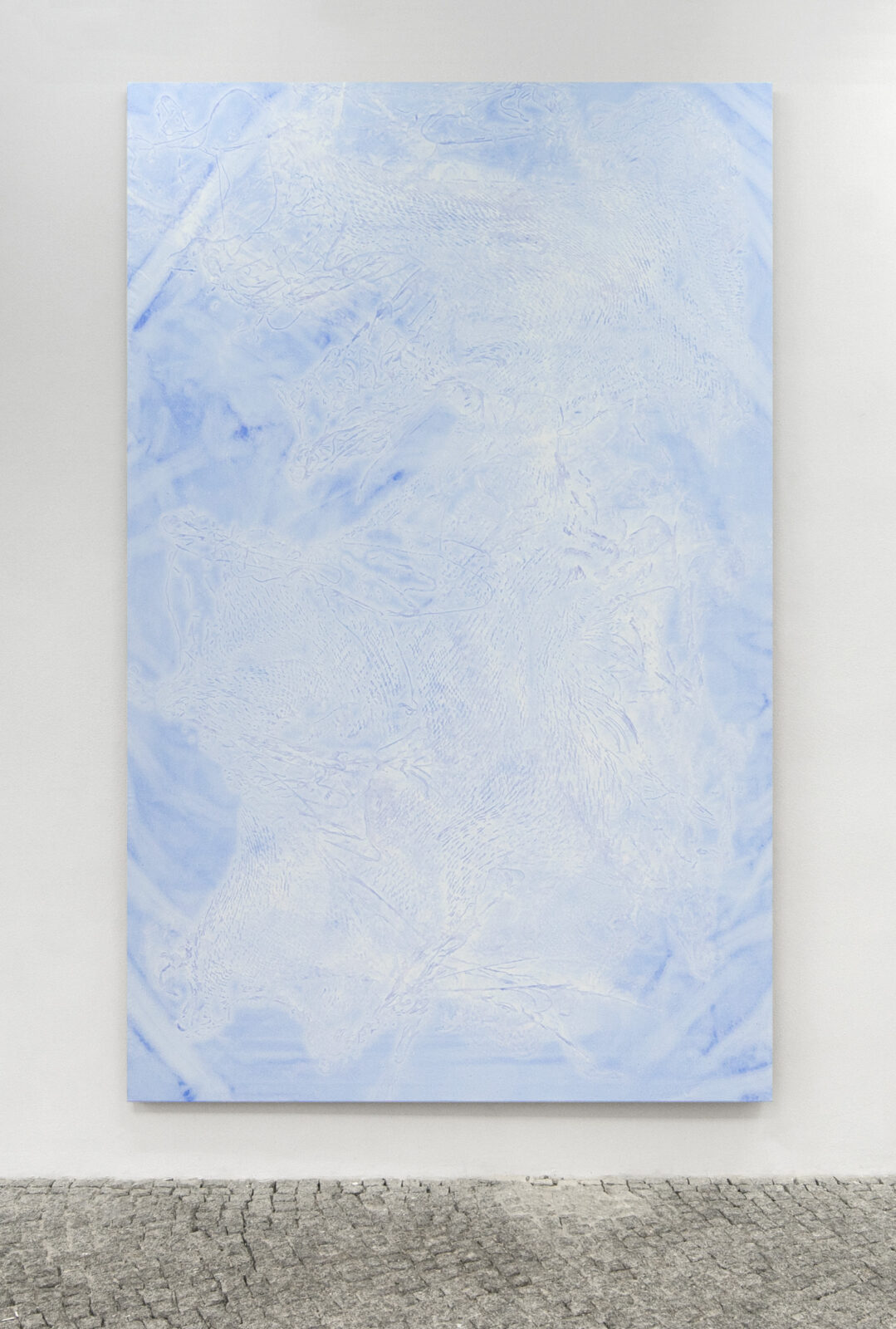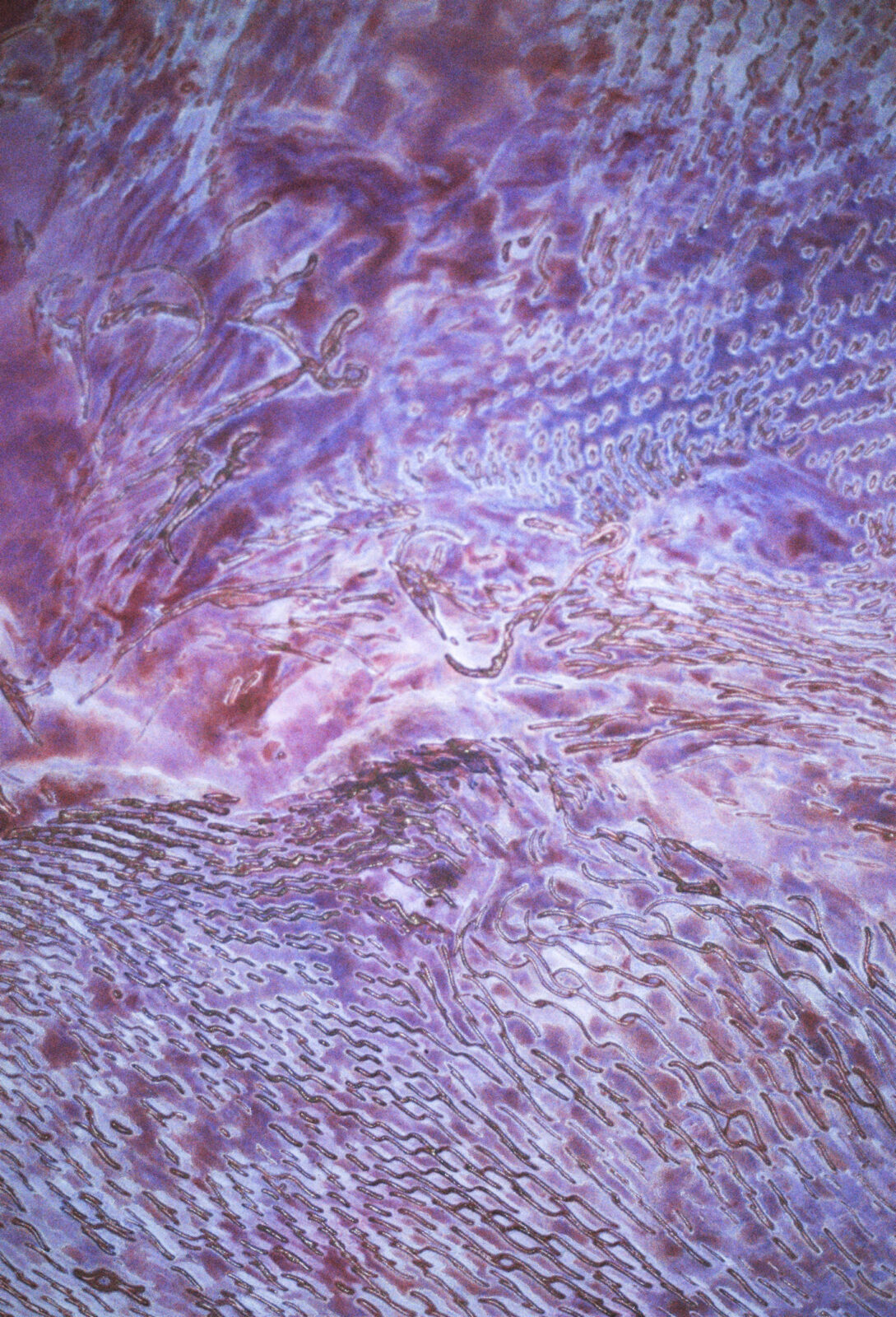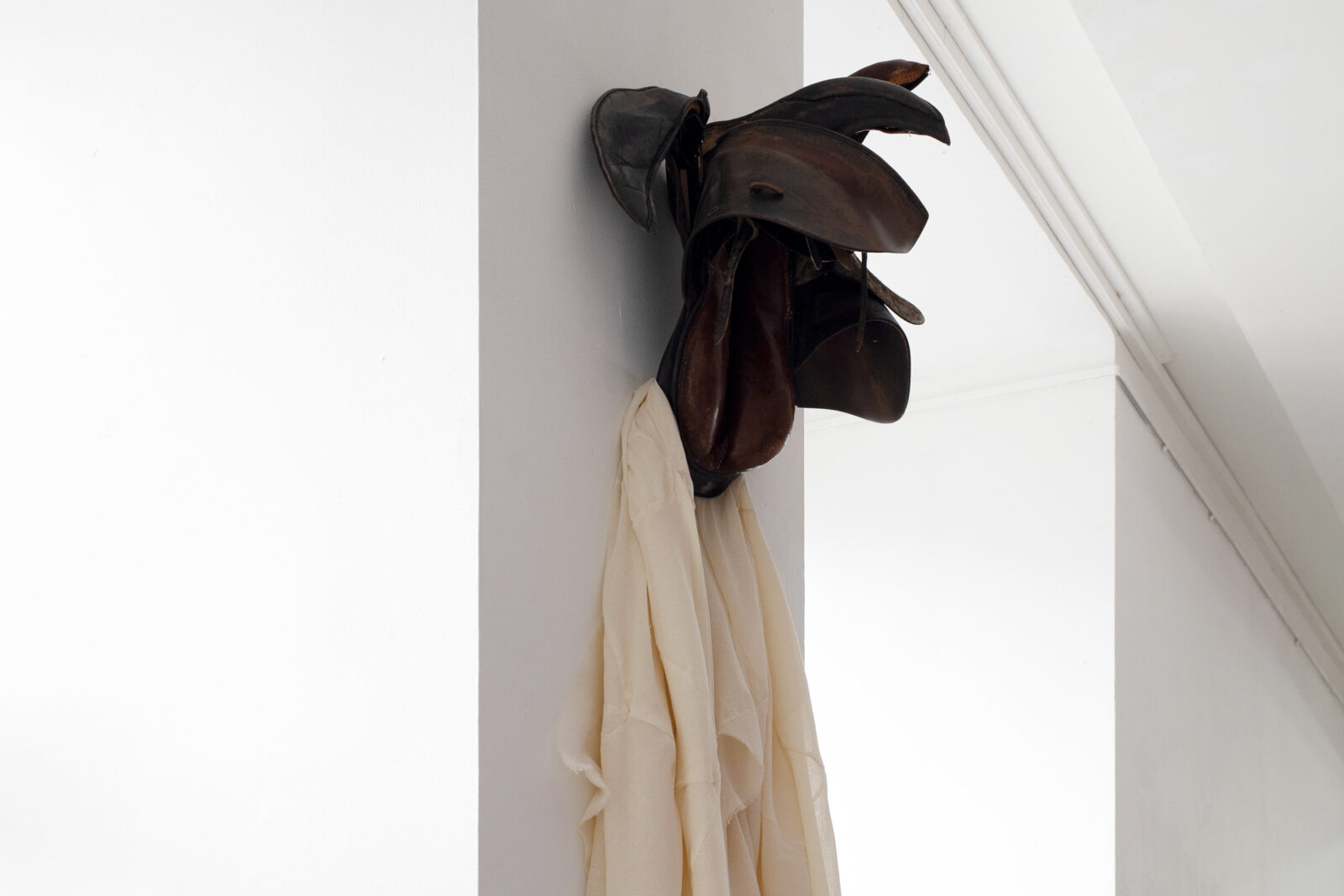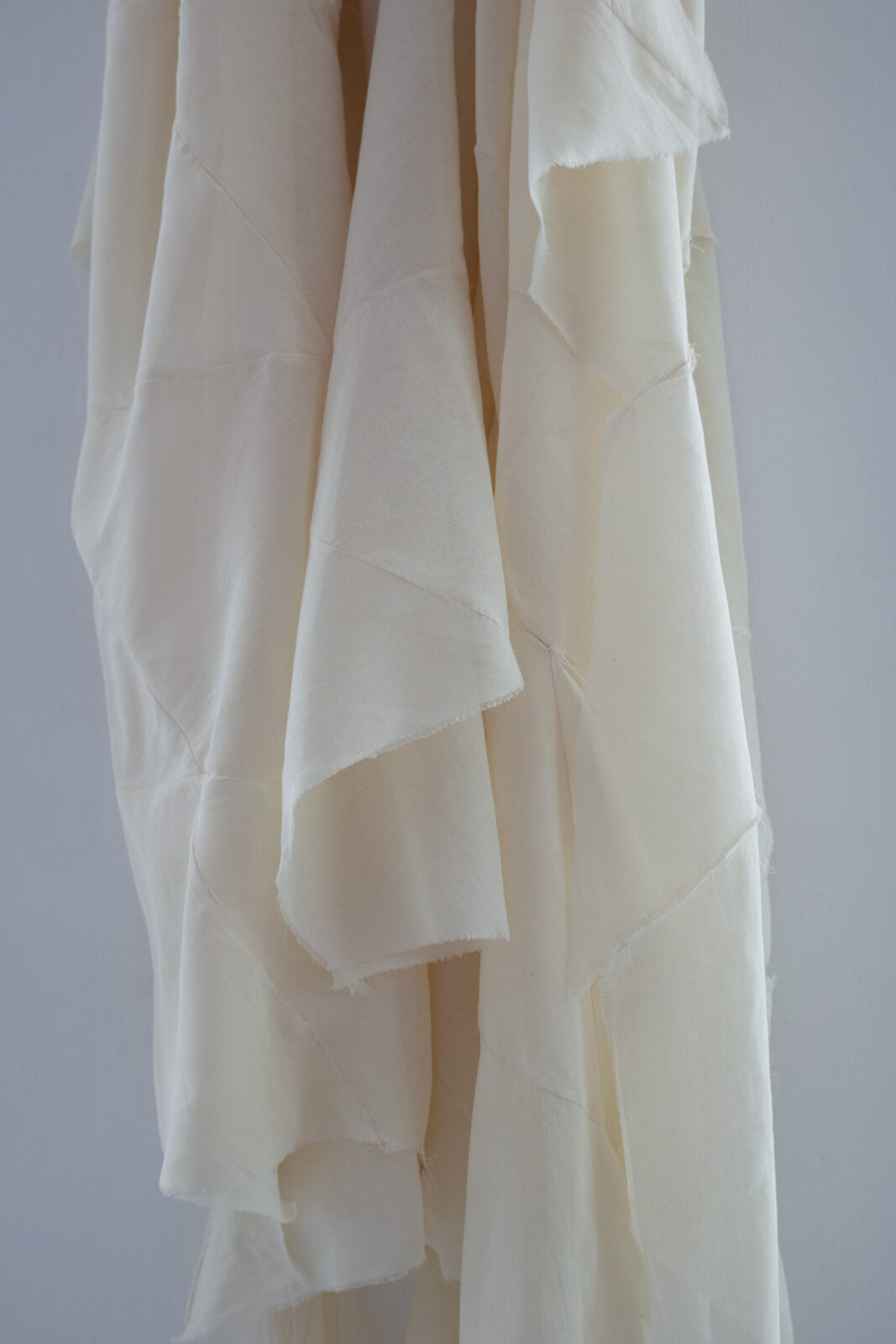Alizée Gazeau
HÄUTUNG
20 January - 5 February 2023
Alizée Gazeau – HÄUTUNG
Opening 20 January 2023
from 6pm
20 January – 5 February 2023
Alizée Gazeau (born in Paris in 1990) is an artist and curator based in Berlin since 2020. During her studies of art history and philosophy at the Sorbonne, she laid the foundations for her artistic reflection. Painting is her anchorage, both as a medium of expression and as an object of research. She deploys a language where autobiographic aspects intertwine with reflections on the structures that make up the world. Surface vibrations, skin envelopes, and interfaces between narratives are the starting points of her research. Starting from found objects made of intertwined meshes, her paintings and sculptures create spaces of contact in a continuous interplay between control and letting go embodied by these objects. Her canvases are like fragmented tissues, projection screens or environments in which the permanence of the imprint and the process of metamorphosis, harmony and disturbance, mastery and fluidity coexist.
Between 2018 and 2020 she was an artist-in-residence at the Cité Internationale des Arts, the Hartung Bergman Foundation, the Michelangelo Pistoletto Foundation, Joya:AiR and at Artemis Studio Ikaria. In 2018 she founded Publication d’Art Non linéaire, each issue of which is a collective creation that brings together artists and theorists on the occasion of exhibitions and meetings. She has exhibited in emerging independent venues and galleries in France, Greece, Germany, Italy and Japan. Furthermore, she has curated several group exhibitions such as “Interfaces, or those who caress the surface” at Interface in Berlin and Off Water at Sainte Anne Gallery in Paris. In January 2023, her first solo exhibition in Berlin will take place at Gr_und, with the support of the French Institute.
An End to a Sentence
A Conversation between Alizée Gazeau and Lisa Deml
Lisa Deml: The impression that settled on my mind when I first came to see this series of painting in your studio was that of maturity. To me, these paintings are a very clear and condensed expression of different lines of thought and experimentation that you have been following for several years. They seem to have grown through practice and now coincide with your first solo exhibition. How is this exhibition situated in your artistic development, what does it mean to mark this point in time?
Alizée Gazeau: I consider this exhibition as an opportunity to end a first sentence. I invoke the notion of a sentence, but you could also say it marks the end of a first journey. My work is concerned with process itself and I have the feeling that I could develop the same idea further indefinitely. In this sense, the exhibition at gr_und is also a challenge for me to put an end to this process. Even though I would never say that this process is finished, I have reached a point when I can let it settle down and let go. When the work enters into an exhibition space, it does not belong to me anymore, it is not about me anymore—the work has to speak for itself, as Louise Bourgeois would insist. She says that an artwork has nothing to do with the artist; it has to stand for itself. I find this credo helpful to navigate the tension between the intimacy inherent in artworks and the extrovert nature of exhibitions.
This is not only your first solo exhibition but also the first time that you work in painting and to this scale. How did you arrive at this discipline and format of 200x300cm? Would you say that it is the result of a measure of trust and confidence you have gained in the process?
I felt the need to not only engage the hand and the eye in the work process but to involve the whole body. It is a very physical process as I work on the floor and pull and place the hammock and the net on the canvas. And it is not only a physical experience for me in the production process but also for the viewer in front of the paintings. I wanted the paintings to be bigger than us, so that they create an immersive sensation that exceeds the human body.
